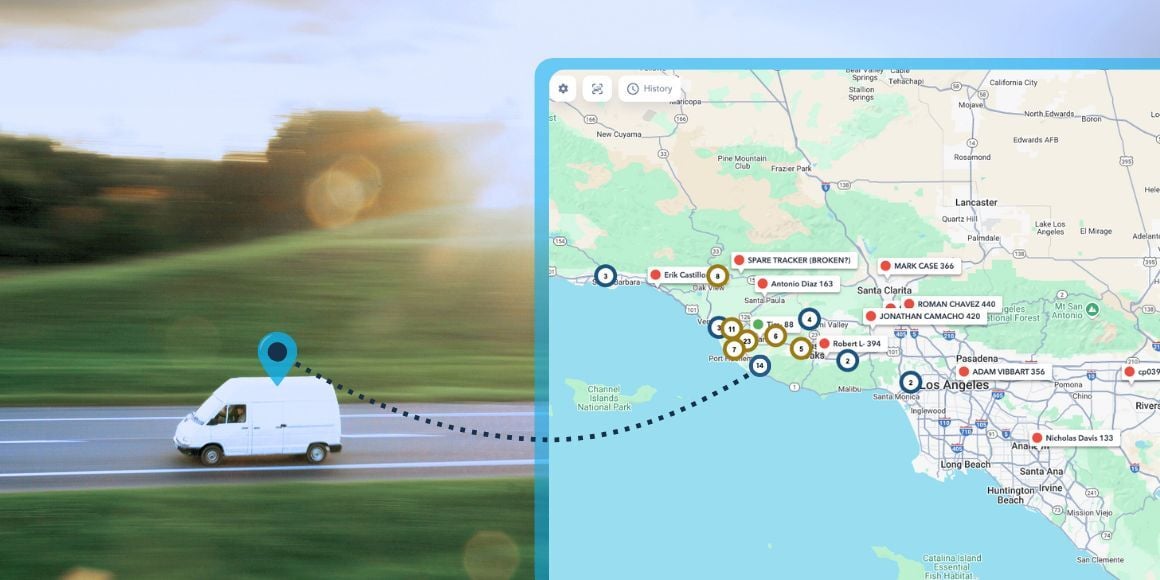What’s the Difference Between Fleet Management and Telematics?
Do the terms fleet management and telematics mean the same thing? If you’ve been looking into GPS vehicle tracking services, you might have gotten this impression. Many companies use the terms interchangeably. Although there is some overlap, there are also important differences between fleet management and telematics. Let’s discuss them.

As we’ve noted on our “What Is Telematics?” page, telematics combines the concepts of telecommunications and informatics. In other words, telematics is the process of collecting data from one source (say, a device installed in a business vehicle) and transmitting that data over a network to other sources (such as a company’s in-house computers or mobile devices).
What is fleet management?
What this means is that telematics—or more specifically, fleet or vehicle telematics systems—represent one aspect of fleet management. But fleet management itself is a far broader term.
Let’s consider the responsibilities of a company’s vehicle fleet manager.
This person’s duties typically include:
- Monitoring and improving fleet efficiency
- Tracking and reporting the costs and ROI of each vehicle in the fleet and the fleet as a whole
- Helping to keep the company’s vehicle operations in compliance with relevant industry regulations and laws
- Purchasing new vehicles and selling old vehicles as needed
- Monitoring and managing driver behavior
- Ensuring the fleet vehicles undergo regular maintenance to improve both safety the long-term ROI of each vehicle
This list could go on, but the examples above should give you an idea of how broad a fleet manager’s responsibilities are.
The bottom line, if you’re wondering about the differences between fleet management and telematics, is that vehicle telematics is just one piece of the fleet management puzzle. It represents a set of technologies and processes designed to help capture, transmit, and store data that can improve the performance and ROI of a business’s fleet. Let’s briefly review how this can work.
How fleet management and telematics can work together
Keeping in mind the many responsibilities of fleet management we discussed above, here are just a few real-world applications illustrating how a fleet manager might use a vehicle tracking solution.
- A telematics system’s ability to record and deliver vehicle location data can help a fleet manager more accurately document and report drivers’ time on jobs, for billing and timecard purposes.
- A telematics system’s ability to deliver real-time and historical data about driver behavior—average speeds, braking, acceleration, cornering etc.—can give a fleet manager insight into which drivers are mishandling company vehicles. A fleet manager can use this information to incentivize drivers to behave more responsibly.
- A telematics system’s ability to track and report on engine hours and miles logged for each vehicle can make it easier for a fleet manager to keep track of each vehicle’s regularly needed maintenance schedules, which can help boost the company’s long-term ROI of its vehicles.
Make sure to check out some of our highly rated reviews from satisfied customers utilizing telematics on Capterra or TrustPilot!





